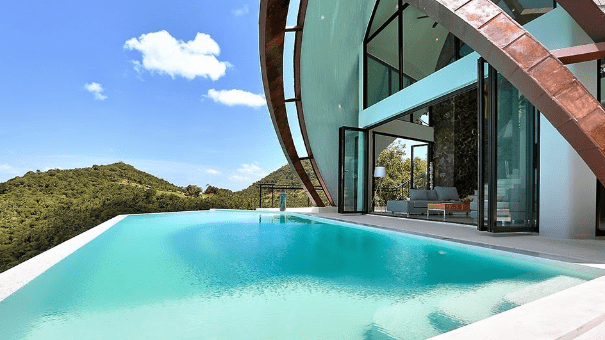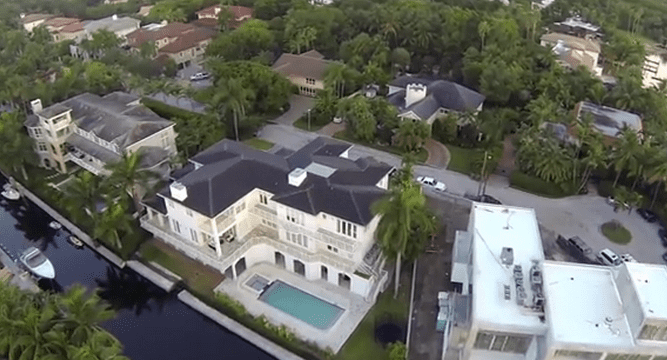Royce Pinkwater, CEO & Founder of real estate advisory Pinkwater Select gives an inside look at the latest luxury innovations transforming the property world.

Royce Pinkwater, CEO & Founder of real estate advisory Pinkwater Select gives an inside look at the latest luxury innovations transforming the property world.
Royce Pinkwater, CEO & Founder of real estate advisory Pinkwater Select gives an inside look at the latest luxury innovations transforming the property world.
Recently, on Luxury Society, we provided you with a tailored snapshot of where ultra-high-net-worth individuals from emerging economies are investing in real estate and why.
Here, Royce Pinkwater, CEO & Founder of real estate advisory Pinkwater Select gives an inside look at the latest luxury innovations transforming the elite buying experience.
Something interesting is happening in the luxury property markets. As buyers become both more global and more tech savvy, methods of presenting properties are evolving dramatically. Traditionally, because there were only limited visual techniques to use in marketing properties, buyers absolutely, positively needed to visit the property personally in order to understand the property, its look, feel and proportions. Today, that is not necessarily the case.
“ The demand for the best new developments is so high that buyers are interested very early on ”
What’s Changing?
First, we often see high net worth buyers looking at multiple properties in multiple global markets. Touching down at all of them just isn’t practical.
Second, the demand for the best-of-the-best new developments is so high that buyers are interested in units very early on, often before ground is broken and before the project is actually open to buyers.
In both of these cases, the challenge is: How do we market a property that a buyer can’t actually see in person? How can we convey the “look and feel” of the property so buyers can get a sense of being there?
The truth is, while there is more global buying, selling and investing going on, it takes just as long to fly anywhere as it has in decades, and that fact is not substantially changing any time soon.
“ An enormous shift occurred in the type of product the markets were producing ”
Then
When I started in the business, our principal tool was the Select Register, the “go-to” book that listed just about every floor plan in every important building. Often we didn’t even use photos. As the markets were local then and no one thought about global purchasers, the Select Register was sufficient for locals who would then come view the properties.
Virtual Reality Walk-Through Of A Home In Los Angeles
We next used professional photographers, who provided great photos, but the photos were still two-dimensional and only gave a sense of what part of the room/floor plan looked like.
Then we began videoing the properties, which was not very effective, either – the videos were uneven, bumpy, dizzying, usually accompanied by a pretentious voiceover, usually with a British accent. I shudder just remembering it, and these sort of videos are still being used by many brokerage firms.
Meanwhile, an enormous shift occurred in the type of product the markets were producing. No more co-ops were being built; everything was condo, which people could buy with far fewer restrictions, and were far more liquid to sell, as well. With these billion dollar new developments, developers in the big markets (such as New York City, Miami, and London) began selling from floor plans and sales offices alone.
Having sizable budgets, they used best-in-class expensive drawings and renderings in order to represent what their projects would look like. They’d also include built out demonstration kitchens and bathrooms, which showed appliances, fixtures, and materials, and an approximation of the space.
Still, many properties were sold which, when delivered, did not meet expectations. With some projects, like The Plaza in NYC, there were lawsuits from unhappy buyers who claimed developers did not deliver what was promised and paid for.
“ Now, we are entering a new world ”
Now
Now, we are entering a new world. Innovative and inexpensive technologies from the entertainment world are becoming commonplace sales tools.
For instance, single homes and their surrounding grounds are being filmed via drone. Rapidly becoming a fixture in big-budget films, drones create an effortless sweep and movement that can make the most commonplace property look breathtaking.
There’s something about the vantage point that the eye isn’t yet accustomed to – subtly different from, and much closer than, a helicopter view – that makes it more intimate, as if the viewer sprouted wings and is sailing solo about the property with ease.
Drone Video Of A Home On Coconut Grove

And then, for capturing interiors is of course, the new, new thing: Virtual Reality (VR). The entertainment industry, the tech industry, and corporate marketers are spending $billions on VR technology, along with research into filming techniques and their psychological effect on viewers. And the results are powerful. VR source imagery is filmed via a person walking about the property with a helmet that has multiple (usually ten) cameras fixed around the outside in a complete 360o viewing range.
Once the panoramic digital source video is captured, it’s fed through software which creates a three-dimensional virtual environment that you can move around in as if you’re walking through the property that was filmed. The effect is astonishing, amazingly realistic, and effective in selling property.
The advantages in saved time, travel, and money are obvious. Right now, the filming process is still a bit cumbersome, so VR is a technique that is employed judiciously. But the costs are coming down rapidly and the number of people who understand the equipment is increasing day-by-day to where we are now at a point where nearly everyone in the business understands that VR marketing is the wave of the future. Combine this with a younger generation of wealth who are entirely at ease with technology and increasingly willing to purchase property with its aid, and you’ve got a blockbuster sales tool.
“ Some firms are putting new wrinkles on older techniques, like employing Hollywood talent to make short “lifestyle” films ”
As for new developments, increased computing power, advanced Computer Aided Design software, and VR technology are allowing developers to create virtual 3-D models that you can “walk around in” via a VR headset, just as if the property was real and had been filmed.
I’ve also heard that some firms are putting new wrinkles on older techniques, like employing Hollywood talent to make short “lifestyle” films of actors living in a home so that prospective buyers can see and imagine what it would be like for them to live there.
We are indeed a long way away from the days of the Select Register, and we’re probably only at the beginning of how technology will change our marketing tactics.
Welcome to the future!
To further investigate luxury real estate and technology on Luxury Society, we invite your to explore the related materials as follows:
– Real Estate Focus: Where The UHNWIs Buy
– Luxury Real Estate Prices Reach All New Heights
– The Future Of Luxury Hotels










